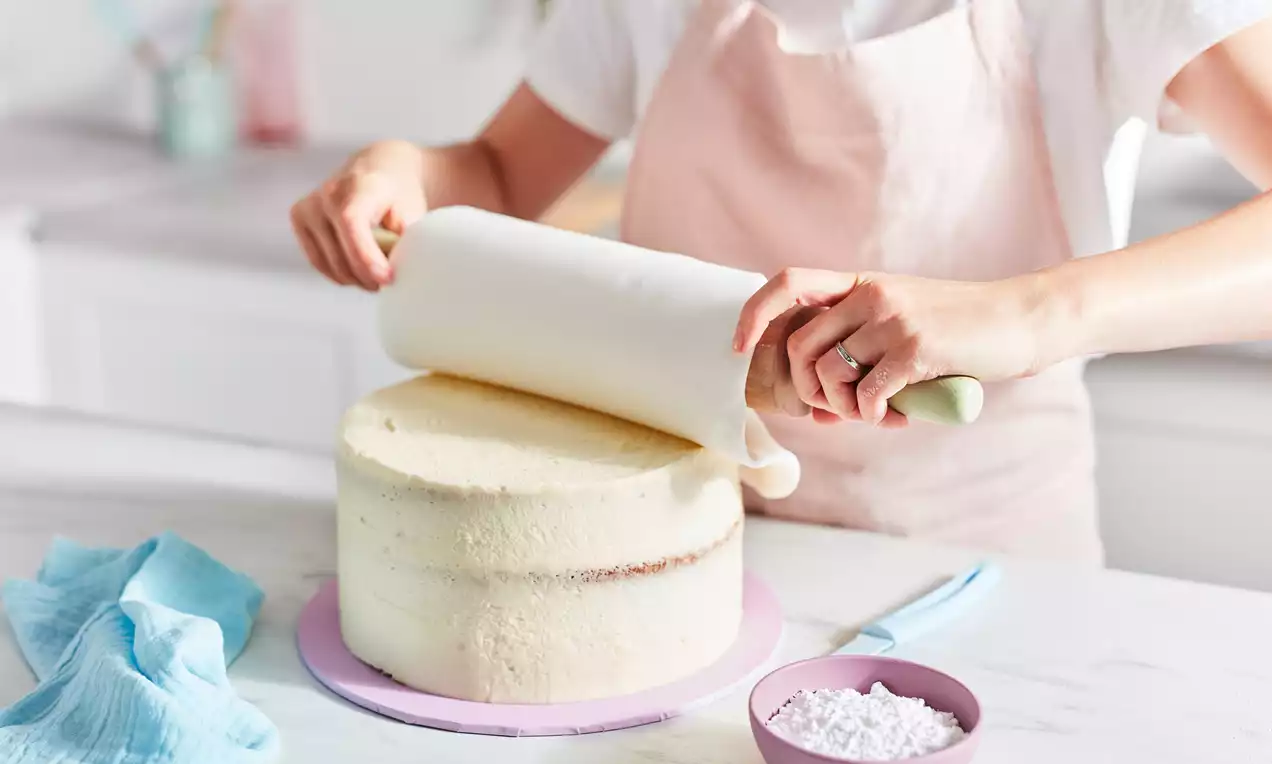
How to Cover a Cake with Fondant Icing
In our guide of how to cover a cake with fondant icing, we’ll run through the equipment you need to effectively put fondant on a cake and the essential steps to follow. We’ll also answer some of your most frequently asked questions about fondant.
Fondant is an edible icing used to decorate and sculp cakes. It gives them a super professional finish, and getting skilled at covering your cakes in fondant can truly elevate your home baking. You can test out your fondant skills with our Vegan Christmas Cake Recipe and Battenburg Layer Cake Recipe .
You’ll need:
• Cake Buttercream or ganache – you’ll need to cover your cake with this before the fondant icing Water (alternative to buttercream)
• Fondant - we love our Dr Oetker fondant
• Food colouring (optional if you want to add some colour to your fondant) – try our Dr Oetker food colours
• Rolling pin
• Fondant smoother
• Sharp knife
• Icing spatula
• Cornflour or icing sugar for dusting
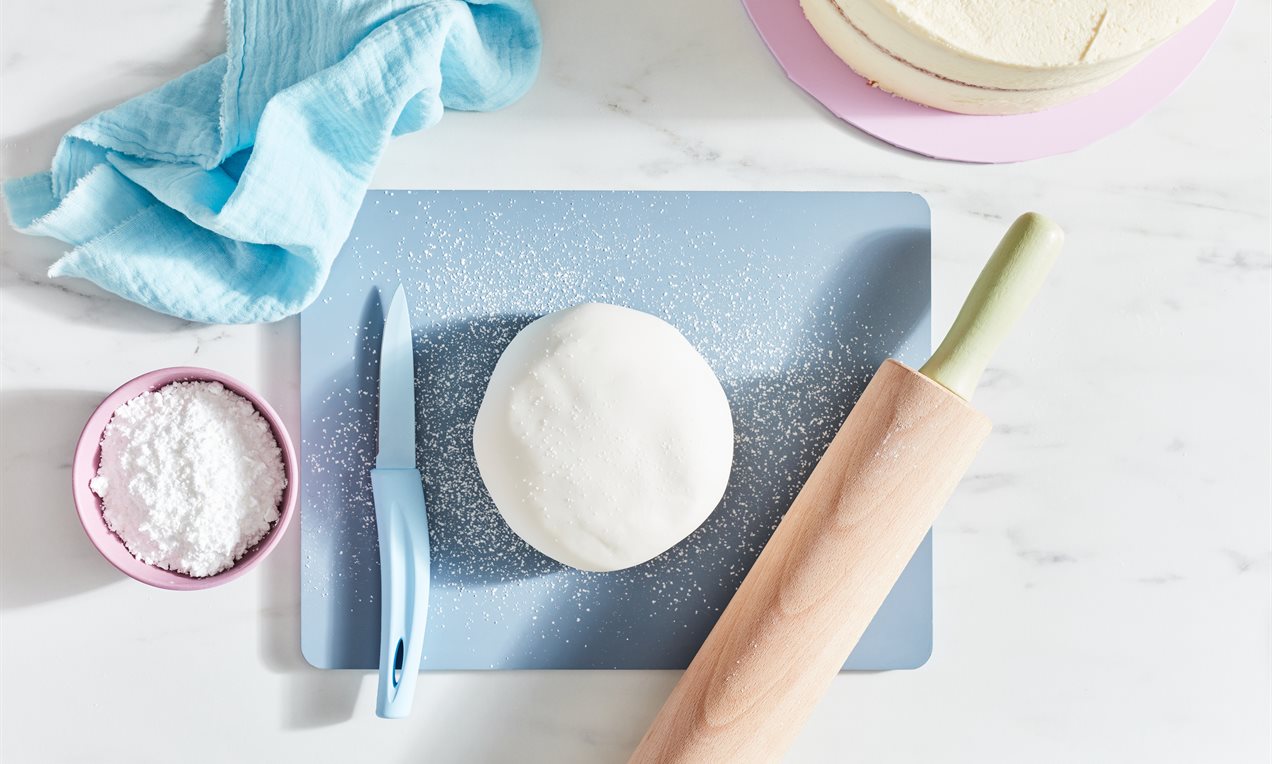
Kneading the fondant helps get it to the right temperature and consistency so you can roll it out and effectively cover your cake – it also helps evenly distribute any food colouring.
When your fondant is soft and pliable after about two minutes of kneading, you’ll know you’ve done enough. You can even put it in the microwave for 10 seconds.
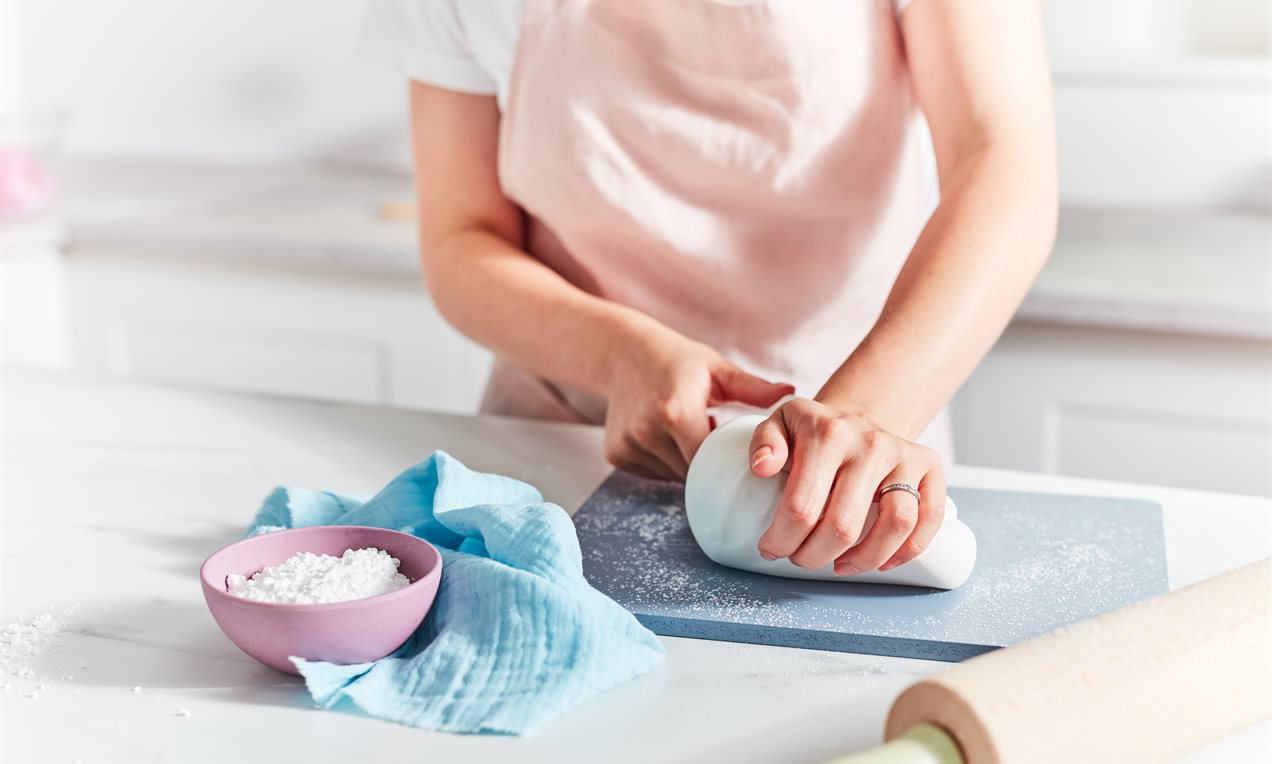
Lightly dust your surface with icing sugar, knead and roll the fondant out in a circle that’s wide enough to cover the cake. Keep it around 0.5cm thick.
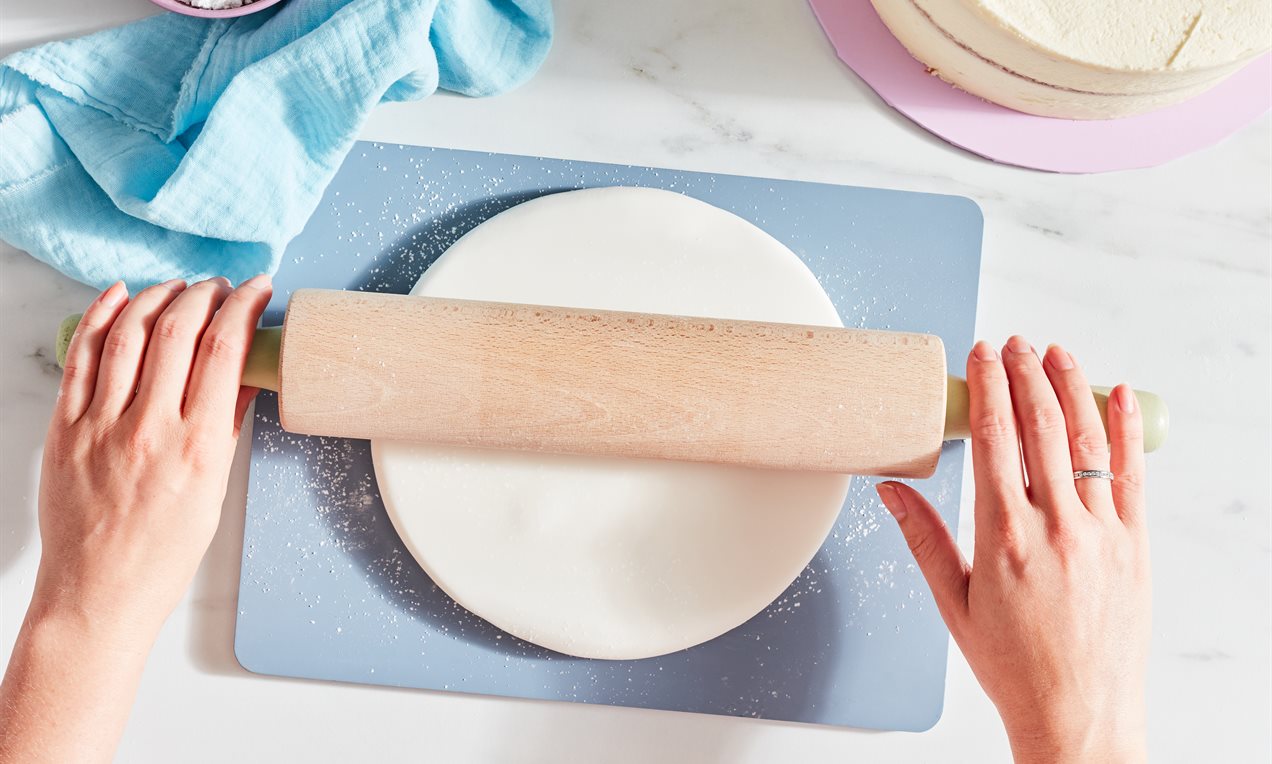
Lift the icing using your hands or a rolling pin and drape it over the top of the cake. Work carefully and slowly as it’s super important to try and prevent any air bubbles.
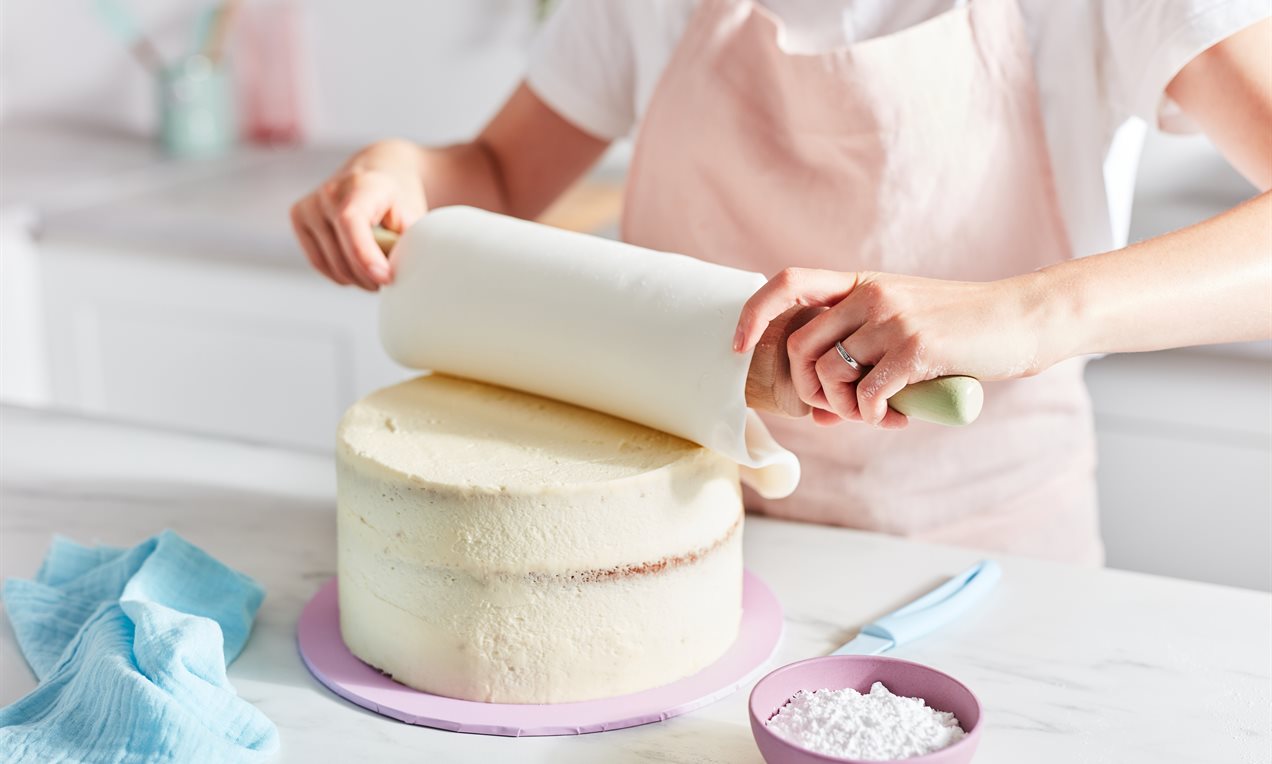
Use your cake smoothers to smooth the fondant. Push out any air bubbles and creases beginning at the top then working down the sides. Alternatively you can use your hands to smooth out the fondant. Then simply trim any excess at the bottom with a sharp knife or palette knife.
We love using a little extra fondant to get creative with your cake decoration. In our Birthday Cake with Fondant Icing recipe, you’ll use extra fondant mixed with food colouring to create small colourful fondant polka dots to place all over your cake. It’s a simple and effective fondant cake decoration.
What should I put on a cake before adding the fondant?
Most cake decorators cover their cake with either buttercream or ganache before adding the fondant. If your crumb coat has crusted or the frosting on your cake is dry, lightly mist with water before covering with fondant.
Can you make a coloured fondant?
Yes, it’s super easy to make coloured fondant. Simply add small dots of food colouring as you knead to evenly spread the colouring in.
How much fondant do I need to cover a cake?
It depends on the size of your cake. To measure the right amount of fondant, you must work out the diameter required. Measure opposite sides and the top of the cake across the centre. For example, an 8-inch, two-layer cake with two sides each of 4 inches, equals 16 inches diameter. You need to roll your fondant out to that diameter at around 0.5cm thick.
Can you refrigerate cake with fondant on it?
You should store a cake with fondant on it at room temperature. If you put it in the fridge overnight it will “sweat” – this is where little beads of sugar water form on the fondant. When you take it out of the fridge, they evaporate and affect the appearance of your cake.
Should I put cake in the fridge before covering with fondant?
You should let your cake cool before applying your fondant. Many bakers chill their cake in the fridge as it makes it easier to apply the fondant.
What is the difference between flower paste and fondant paste?
Flower paste has extra gum tragacanth in the recipe which sets the paste firm and enables the paste to be rolled out very thinly and hold its shape without ripping to achieve delicate shapes like flower petals.
Sugar paste (sometime referred to as Fondant paste) is what we refer to as ‘Ready to Roll’ Icing. This is a block of sugar paste that can be rolled out to cover cakes or to create simple models. This will not set as hard as flower paste and you will not be able to roll as thin.
Now you know the essential steps to follow when covering your cake with fondant icing, you’ll be whipping up some brilliant at-home bakes in no time. We also have loads more handy baking hints and tips at Dr Oetker, from icing cakes to freezing cakes.